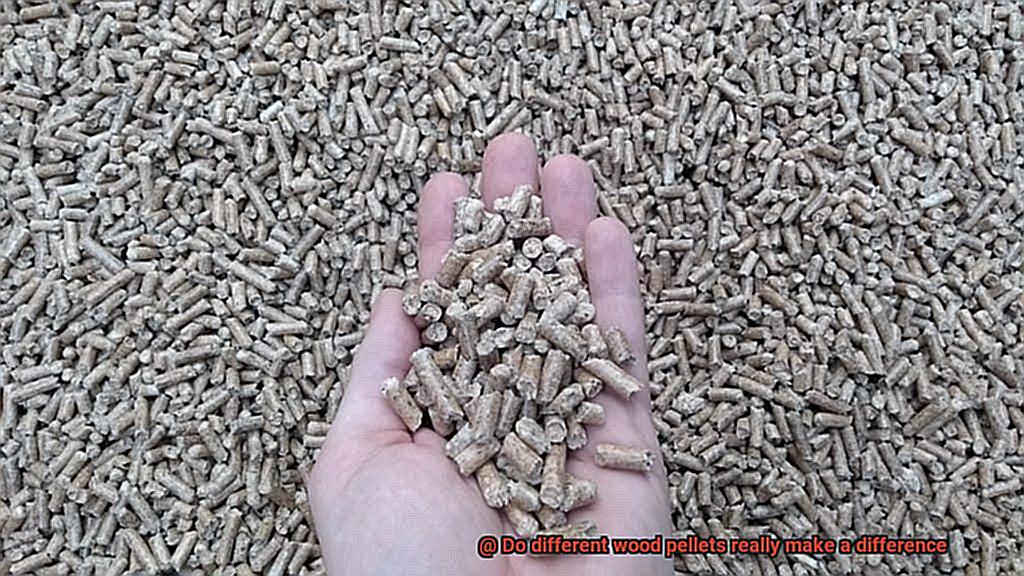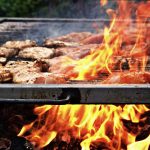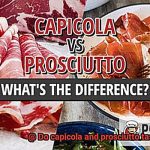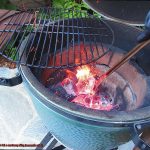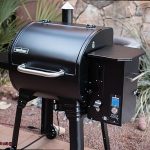Have you ever pondered the impact of wood pellets on the taste and quality of your grilled or smoked meats? As someone who has spent years studying this topic, let me tell you: the answer is a resounding yes. The type of wood pellet you use can significantly affect your food’s flavor, burn time, ash production, and overall grilling or smoking efficiency.
But with so many options available, how do you choose? Should you stick to classic hickory or mesquite, or experiment with more exotic choices like apple or cherry? And what about pellet quality – are premium pellets worth the extra cost compared to cheaper alternatives?
In this blog post, we’ll delve into the world of wood pellets and explore how they impact your grilling and smoking experience. We’ll examine the unique properties of various types of wood pellets and discuss the differences between low-quality and high-quality options. Whether you’re a seasoned pitmaster or a novice griller, this comprehensive guide will provide valuable insights into the fascinating world of wood pellets. So grab a cold drink, fire up the grill, and let’s get started.
Contents
What are Wood Pellets?
Wood pellets are a type of biomass fuel made from compressed sawdust, wood shavings, and other wood waste. The process involves grinding and drying the wood waste before compressing it into small, dense pellets. This results in a highly efficient fuel source that produces minimal ash or smoke.
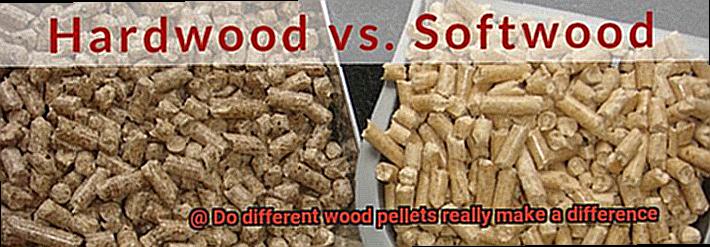
Traditionally used as a heating source for homes and businesses, wood pellets have become increasingly popular in grilling and smoking applications. They offer consistent size and moisture content, making it easier to regulate the temperature when cooking. Plus, as they are made from waste materials, they are considered a renewable and sustainable energy source.
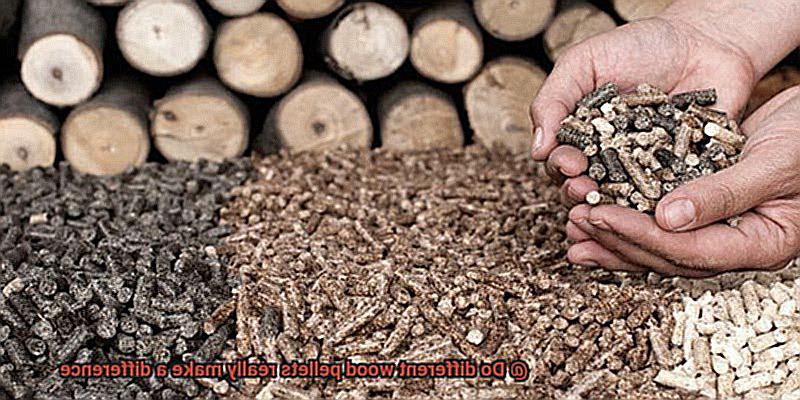
Different types of wood pellets can impart unique flavors and aromas to your food, elevating your grilling experience. Hickory pellets have a strong, smoky flavor that pairs well with beef and pork. Mesquite pellets have a bold, earthy flavor that is perfect for grilled chicken and fish. Apple pellets have a sweet, fruity flavor that works well with pork and poultry. And cherry pellets have a mild, sweet flavor that complements all types of meat.
But it’s not just about the flavor – the type of wood pellet you use can also affect the heat output and burn time of your grill. Hardwood pellets produce more heat than softwood pellets, meaning they burn hotter and faster. This can be useful for cooking at high temperatures or when you need to cook food quickly. Conversely, softwood pellets burn longer and produce less ash, which is beneficial if you’re doing a low-and-slow cook or want to minimize cleanup.
Different Types of Wood Pellets
When it comes to barbeque, the type of wood pellets you choose can take your food from mediocre to mouth-watering. Here are five ways different types of wood pellets can affect the flavor and quality of your barbeque:
- Distinct Flavor Profiles: Each type of wood pellet has its unique flavor profile that can enhance the taste of your food. For example, hickory pellets provide a robust and smoky flavor that is ideal for beef and pork, while apple pellets give a sweet and fruity taste that works well with pork and poultry. The right wood pellet can elevate your barbeque game to new heights.
- Aromas: The aroma of the wood pellets can also influence the flavor of your food. The strong smoky aroma of mesquite wood pellets is perfect for grilling chicken or fish, while cherry wood pellets give a mild and fruity aroma.
- Heat Output: The type of wood pellet you use affects the heat output of your grill. Hardwood pellets burn hotter and faster than softwood pellets, producing more heat. This can be advantageous if you’re cooking at high temperatures or need to cook food quickly.
- Burn Time: Softwood pellets burn longer and produce less ash, making them ideal for low-and-slow cooking or minimizing cleanup. On the other hand, hardwood pellets burn faster but produce more ash.
- Meat Pairing: When selecting wood pellets for your barbeque, it’s crucial to consider the type of meat you’ll be cooking. For instance, if you’re grilling beef or pork, hickory or mesquite wood pellets are excellent choices as they provide a strong and bold flavor that complements these meats. If you’re smoking chicken or fish, apple or cherry wood pellets would work well as they provide a milder and sweeter flavor that complements these meats.
How Do Wood Pellets Affect the Taste and Quality of Grilled Food?
As someone who has spent countless hours perfecting the art of grilling, I can attest to the fact that wood pellets are an absolute must-have if you want to take your dishes to the next level. Not only do they add a smoky and delicious flavor, but they also influence the texture and appearance of your food.
One of the most significant ways wood pellets affect the taste and quality of grilled food is by adding flavor and aroma. Different pellets offer unique flavor profiles that can complement or contrast with the food being cooked. For example, hickory pellets create a sweet and smoky flavor that pairs well with pork and beef, while mesquite pellets provide a bold and intense flavor that works wonders with red meats like steak.
But flavor isn’t the only thing that wood pellets bring to the table. They also play a crucial role in creating that perfect sear on your grilled meats, giving them a crispy exterior while keeping the inside juicy and tender. Additionally, the smoke produced by burning wood pellets creates an alluring color on the meat and veggies being grilled.
However, it’s important to keep in mind that not all wood pellets are created equal. Some low-quality pellets may contain fillers or chemicals that could negatively impact the taste and quality of your food. To ensure the best results, it’s vital to choose high-quality wood pellets made from pure hardwood with no additives or binders.
When selecting your wood pellets, consider what type of food you’ll be grilling and what flavor profile you’re aiming for. Fruitwood pellets like apple or cherry work wonders with poultry and vegetables, while hickory and mesquite are perfect for red meats.
The Impact of Different Wood Pellets on Heat Output and Burn Time
Firstly, the type of wood used to make the pellets plays a significant role in their performance. Hardwood pellets, such as oak and hickory, are denser and contain less moisture than softwood pellets like pine or cedar, resulting in hotter temperatures and longer burn times.
However, not all hardwood pellets are created equal – be sure to choose high-quality hardwood pellets made from 100% pure wood without additives or fillers to achieve optimal performance.
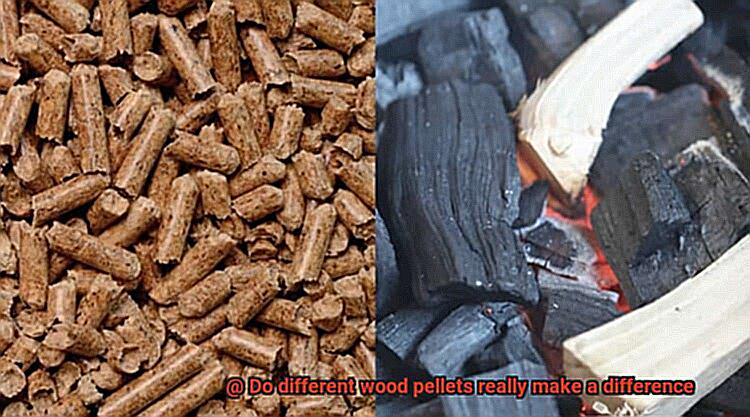
But it’s not just the type of wood that matters – the size and shape of the pellets can also impact heat output and burn time. Larger pellets may take longer to ignite but provide a longer burn time, while smaller pellets ignite quickly but burn faster. Additionally, cylindrical pellets allow for better oxygen flow and combustion than irregularly shaped ones.
So, what does this all mean for your next BBQ? If you’re looking for a more extended cook time and higher heat output, consider using high-quality hardwood pellets made from pure wood without additives or fillers. And don’t forget to factor in the size and shape of the pellets based on your preferences and desired cooking time.
Pros and Cons of Different Types of Wood Pellets
Grilling with wood pellets is a popular way to add flavor and depth to your dishes, but with so many options on the market, it can be overwhelming to choose the right one. To help you make an informed decision, we have compiled a list of the pros and cons of different types of wood pellets for grilling.
Hardwood Pellets:
Hardwood pellets are a top choice for those who want intense heat and flavor. With hardwoods like oak, hickory, and maple, these pellets are perfect for grilling meats such as ribs and brisket. However, they can be more expensive than other types of pellets, and they may produce more ash.
Fruitwood Pellets:
Fruitwood pellets, made from apple, cherry, or peach trees, are ideal for adding a sweet and fruity flavor to your dishes. They work best with poultry and fish and produce less ash than hardwood pellets. However, they may not burn as hot or as long as hardwood pellets.
Softwood Pellets:
For those on a budget, softwood pellets made from pine or spruce might be a good option. They’re often less expensive than other types of wood pellets but may not produce as much heat or flavor. Additionally, they may leave behind more ash than other types of pellets.
Blended Pellets:
Blended pellets are a combination of different types of wood pellets that can offer a unique flavor profile not found in single-type pellets. They can also provide a balance between heat output and burn time. However, blended pellets can be more expensive than single-type pellets.
Quality of Wood Pellets
The quality of the wood pellets is crucial to your grilling experience. High-quality pellets are usually made from pure hardwoods without any fillers or additives. Cheaper pellets may contain binders or other materials that can affect the taste of your food.
Cost
Using wood pellets for grilling may be more expensive than other fuels like charcoal or propane, but many pellet grills are designed to be efficient with their fuel usage, so you may end up using less overall.
Tips for Choosing the Right Type of Wood Pellet for Your Grill
If so, choosing the right type of wood pellet is essential. The type of wood pellet you choose can greatly impact the flavor and quality of your food. Here are five factors to consider when selecting the right type of wood pellet for your grill:
Consider the Type of Food You Will Be Grilling
Different types of wood pellets pair better with certain types of food. For example, fruit woods like apple and cherry are great for grilling poultry and pork, while hickory and mesquite are better suited for beef and game meats. It’s important to consider the type of meat you will be cooking to ensure that you select the right wood pellet.
Think About the Intensity of Flavor You Want
Do you prefer a subtle smoky flavor or a more intense one? Some wood pellets have a stronger flavor than others. If you want a light, smoky flavor, opt for lighter woods like alder or maple. If you want a more intense flavor, choose woods like oak or mesquite. It’s important to consider your personal taste preferences when selecting the right type of wood pellet.
Check for Quality
The quality of wood pellets can vary greatly depending on the brand. Look for pellets that are made from 100% natural hardwood without any fillers or additives. This ensures that you get a pure and consistent flavor every time. Don’t skimp on quality when it comes to your wood pellets.
Consider the Brand
Different brands may use different techniques or blends of woods in their pellets, which can affect the flavor. It’s worth trying out a few different brands to see which one you prefer. Don’t be afraid to experiment and find the perfect brand for your taste buds.
Experiment and Get Creative
Don’t be afraid to try out different types of wood pellets and combinations to find the perfect flavor for your taste buds. Keep in mind that some woods may burn hotter than others, so it’s important to monitor your grill temperature and adjust accordingly. Have fun and get creative with your grilling.
How to Use Different Wood Pellets for Maximum Flavor and Aroma
If you’re looking to take your grilling game to the next level, using different wood pellets is an excellent place to start. These pellets can add unique flavors and aromas to your grilled food, creating a culinary experience that is truly unforgettable. To help you achieve maximum flavor and aroma, here are some tips to keep in mind:
Consider the Type of Food Being Grilled
Different types of wood pellets have different strengths and flavors. For example, hickory is ideal for beef and pork due to its rich, smoky flavor, while applewood is perfect for poultry and fish due to its subtle sweetness. Consider the type of food you are cooking and choose a wood pellet that complements its natural flavors.
Experiment with Different Combinations
Mixing different types of wood pellets can create unique and complex flavors that cannot be achieved with a single type. Experiment with different combinations until you find the perfect match for your dish.
Use High-Quality Wood Pellets
To achieve maximum flavor and aroma, it’s essential to use high-quality wood pellets made from pure hardwood without any fillers or additives. Low-quality pellets can contain chemicals and impurities that can affect the taste of your food.
Understand the Characteristics of Each Type of Pellet
Different types of wood pellets have unique characteristics that can enhance or detract from the taste and smell of your dishes. For example, mesquite has a bold, earthy flavor that pairs well with game meats like venison, while cherry adds fruity notes that go well with fish.
Match the Type of Wood to the Food Being Cooked
Matching the type of wood pellet to the food being cooked is crucial to achieving maximum flavor and aroma. For example, hickory is excellent for smoking ribs, while applewood or cherry wood would be better suited for salmon or trout.
Control Smoke Intensity
It’s important to consider the intensity of the smoke flavor you want to achieve. Using too many pellets or leaving your food on the grill for too long can result in an overpowering smoky taste that may not be desirable. Control the smoke intensity by adjusting the amount of wood pellets used and monitoring the cooking time.
lxbHiWyEMww” >
Conclusion
In conclusion, the choice of wood pellet you use can make all the difference in the taste and quality of your grilled or smoked meats. Each type of wood pellet offers a distinct flavor profile that can elevate the taste and aroma of your food to new heights. Whether you prefer a robust and smoky flavor that pairs well with beef and pork, like hickory pellets, or a sweet and fruity taste that complements poultry and pork, such as apple pellets, there is a wood pellet out there for every palate.
But it’s not just about flavor – the type of wood pellet you choose can also affect the heat output and burn time of your grill. Hardwood pellets are known to produce more heat than softwood pellets, which can be advantageous when cooking at high temperatures or when time is of the essence. On the other hand, softwood pellets burn longer and produce less ash, making them ideal for low-and-slow cooking or when you want to minimize cleanup.
When selecting wood pellets for your grill or smoker, it’s important to take into account factors such as what meat you’ll be cooking, what kind of flavor profile you’re aiming for, the quality of the wood pellets themselves, and their cost. By experimenting with different combinations of wood pellets and understanding their unique characteristics, you can achieve maximum flavor and aroma in all your grilled dishes.

